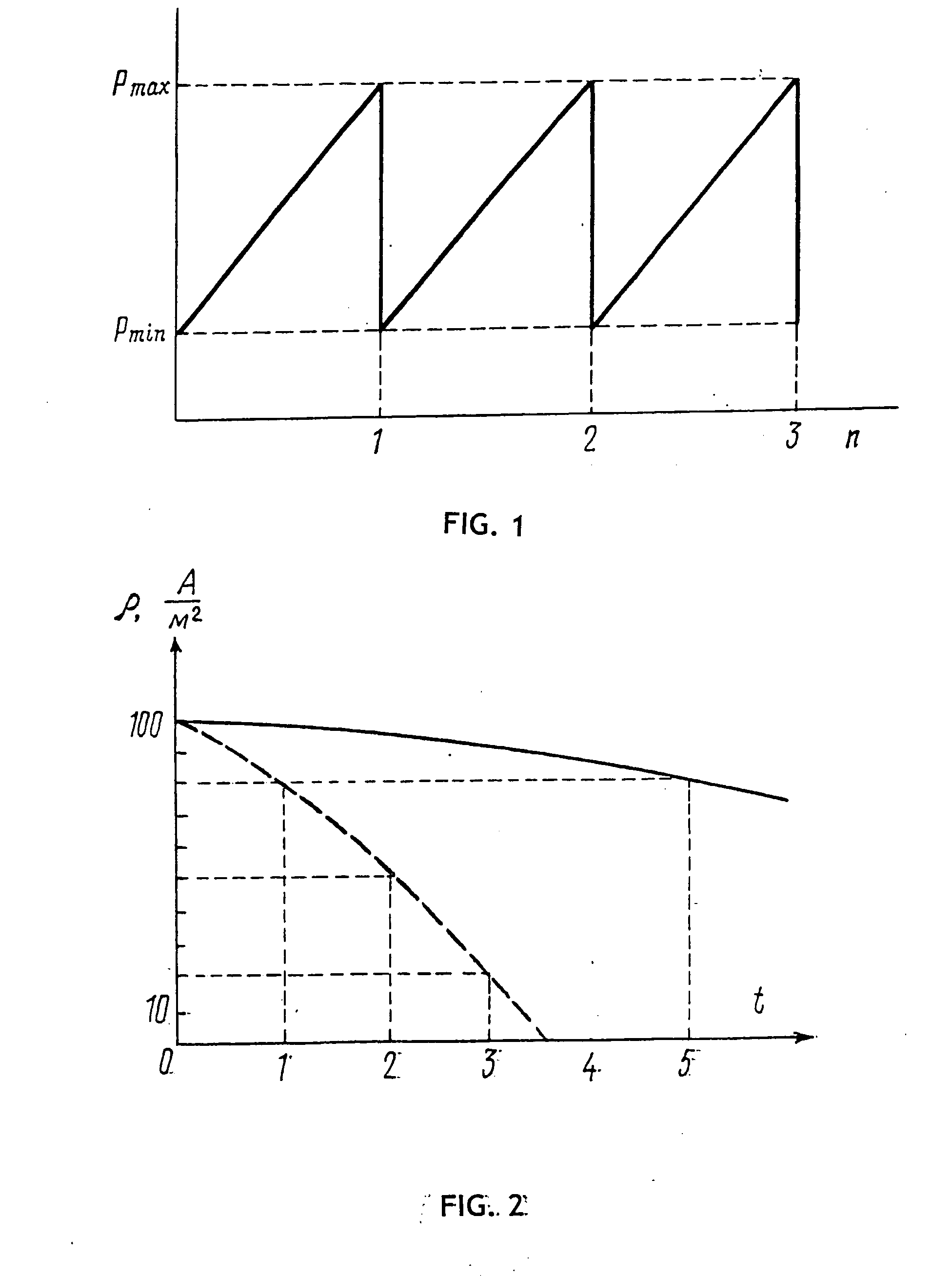Method for cleaning polluted water
a polluted water and cleaning technology, applied in water treatment multi-stage treatments, water/sludge/sewage treatment, water contaminants, etc., can solve the problems of increasing the urgency of polluted water treatment, high power consumption and economic expenditure, and the content of which of the components of pollutants or contaminants is predominan
- Summary
- Abstract
- Description
- Claims
- Application Information
AI Technical Summary
Benefits of technology
Problems solved by technology
Method used
Image
Examples
Embodiment Construction
[0031] The method for treating oil-polluted water proposed therein is carried into effect as follows.
[0032] A dose of polluted water is fed by a vacuum pump to an electrocoagulator which appears as a hermetically sealed container accommodating electrodes disposed in a lower portion thereof, and an initial pressure is established over the surface of said water, said pressure ranging within 0.01 and 0.1 mPa.
[0033] Then an electrocoagulation process is initiated in the course of which the pressure effective over the surface of said dose of polluted water is raised to a value lying between 0.1 and 2.5 mPa.
[0034] A minimum and a maximum pressure value depends on technological capabilities of the vacuum equipment and on strength characteristics of the technological equipment involved, respectively.
[0035] Whenever badly polluted water is to be treated, a minimum and a maximum value of the initial pressure is set to 01 and 2.5 mPa, respectively.
[0036] Optimum values of the minimum and ...
PUM
| Property | Measurement | Unit |
|---|---|---|
| pressure | aaaaa | aaaaa |
| pressure | aaaaa | aaaaa |
| pressure | aaaaa | aaaaa |
Abstract
Description
Claims
Application Information
 Login to View More
Login to View More - R&D
- Intellectual Property
- Life Sciences
- Materials
- Tech Scout
- Unparalleled Data Quality
- Higher Quality Content
- 60% Fewer Hallucinations
Browse by: Latest US Patents, China's latest patents, Technical Efficacy Thesaurus, Application Domain, Technology Topic, Popular Technical Reports.
© 2025 PatSnap. All rights reserved.Legal|Privacy policy|Modern Slavery Act Transparency Statement|Sitemap|About US| Contact US: help@patsnap.com

